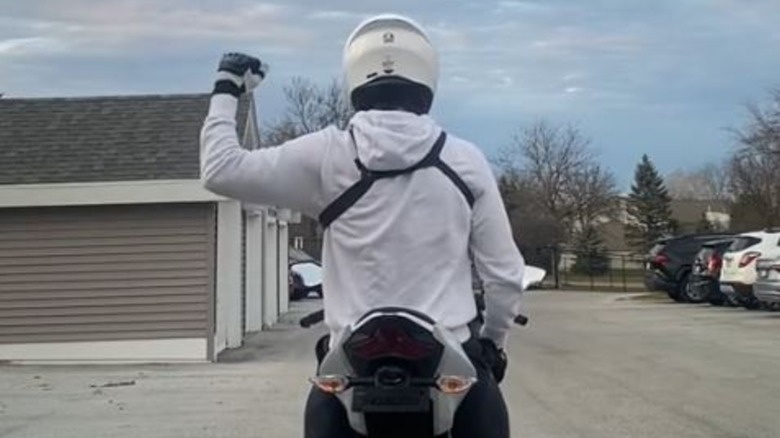What Does It Mean When A Biker Raises Their Left Fist At 90-Degrees?
Because of the many potential hazards on the road when they ride, safety is very important among bikers. Given the increased vulnerability of riders from the lack of structural protection of motorcycles, when compared to driving a car, riders need to maximize their protection by implementing safety measures that include wearing protective riding gear, practicing road awareness, and using defensive riding practices.
Among the vital safety measures that riders employ is the use of various hand signals that serve as visual cues or silent communication among riders. These hand signals work as a kind of universal language that is clear and accurate, enabling riders to quickly and efficiently convey important information about their intended action, including turning, speed changes, stopping, passing, or road hazards ahead to other drivers and even pedestrians.
By using these hand signals, riders help minimize road risks, particularly in situations when turn signals or brake lights may not be visible due to poor lighting or bad weather conditions. Among the most commonly used hand signals by riders is for stopping or doing turns, one of which is when they raise their left arm to a 90-degree angle with the hand forming a fist, which means that they will turn right.
Signals help with safety
The practice of riding etiquette is highly encouraged among the motorcycle community. This includes on-road behavior and interactions, adhering to traffic laws, consideration for other riders, riding technique, safety, respect, and communication, which includes the use of hand signals. This vital knowledge, however, should not preclude non-riders from knowing what these signals mean. Understanding what the various hand signals mean would come in handy should they see one on the road, which helps ensure everyone's safety.
The Motorcycle Safety Foundation provides a list of the frequently used hand signals, which serves as a useful guide for both riders and those unfamiliar with their significance. Hand signals are a simple and efficient form of on-the-road communication that can minimize accidents, share information among riders, and serve as a fallback option in the event the bike malfunctions.
Road safety is a shared responsibility for everyone, riders, drivers, and pedestrians alike. Following traffic rules, avoiding distractions like phones, vehicle maintenance, defensive driving, and paying attention to the surroundings and other vehicles including bikers and their hand signals—are some of the most basic ways to practice road safety. Communication is always important, and recognizing what a rider is trying to say with signals helps in making driving or riding a better and safer experience.

